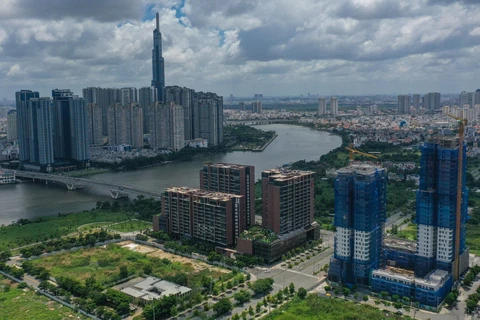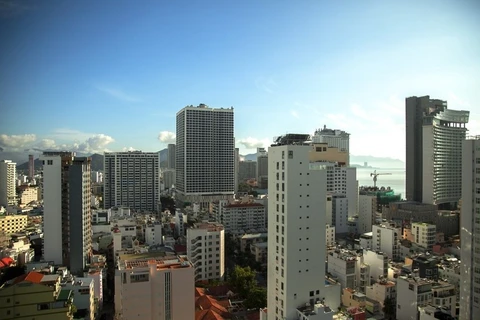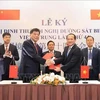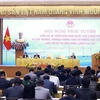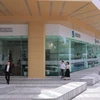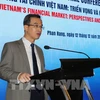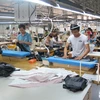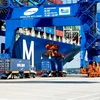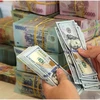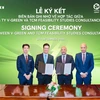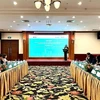
HCM City (VNS/VNA) - The real estate market in southern provinces and cities in the first months of 2024 grew, with land, low-cost housing and apartments seeing higher demand.
Experts believe that the domestic real estate market has hit the bottom and is expected to become vibrant again this year thanks to a series of measures by the Government, ministries, and localities such as new policies, low interest rates and projects serving real housing needs.
According to reports by Dat Xanh Services Institute of Economic, Financial and Real Estate Research, apartment prices in Ho Chi Minh City and neighbouring provinces increased slightly by 2-3%, mainly due to high-end and luxury projects opening for sale.
Townhouses and villas in the South also recorded a slight price increase of 1-3%, mainly in Dong Nai, Ba Ria-Vung Tau and Binh Duong provinces.
Regarding supply, in the first quarter of 2024, the city and the southern provinces only had about 1,200 real estate products for sale.
Although supply is low, these apartment products have diverse prices in most segments. Accordingly, the affordable segment ranges from 35-50 million VND (1,400-2,000 USD) per square metre (up 10-15% over the same period a year earlier, the mid-range segment ranges from 50-80 million VND (2,000-3,200 USD) per square metre (up 5-7% year-on-year).
However, high-end homes suddenly increased to 80-125 million VND (3,200-5,000 USD) per square metre (up 20-30% year-on-year). In the luxury segment, the price is up to 300 million VND (12,000 USD) per square metre and remains stable compared to the first quarter of last year.
Experts said that market confidence is gradually improving, as the proportion of customers registering to visit projects and model houses is increasing. This shows that real estate buyers are starting to become more optimistic to return to this market.
It is forecasted that apartment prices in the city will likely continue to rise due to increased demand while new supply is scarce.
In Dong Nai province, the number of customers looking for information about buying and selling real estate has increased sharply. Demand for real estate in Dong Nai has grown most positively for land and villas. Land products with a price of 8-13 million VND per square metre and an area of 70-120 square metres have been the most searched for recently.
According to Batdongsan.com.vn, land transactions in the city, Long An, Binh Duong and Dong Nai all have had impressive growth.
The Dong Nai Provincial Real Estate Association believes that the real estate market will prosper in the first months of 2024, demonstrating the strong development of infrastructure projects, especially highways connecting the province and surrounding areas and Long Thành International Airport. On the other hand, the diversification of projects such as new urban areas, resorts and social housing is creating many options for both buyers and investors.
Experts believe that the positive signal of the real estate market is thanks to the Government's efforts to remove legal obstacles for projects by amending three sets of laws including the Law on Land, Law on Housing and Law on Real Estate Business.
In addition, the Government's project to develop at least one million social housing from now to 2030 also helps increase housing products.
According to experts, in addition to policies to better support the real estate market, bank interest rates need to remain stable at a low level to create a capital base for real estate businesses.
Deputy Governor of the State Bank of Vietnam (SBV) Dao Minh Tu said that the State Bank will continue to improve the legal framework, simplify procedures, and strengthen preferential credit packages for real estate so that people and businesses can more easily access bank loans./.

